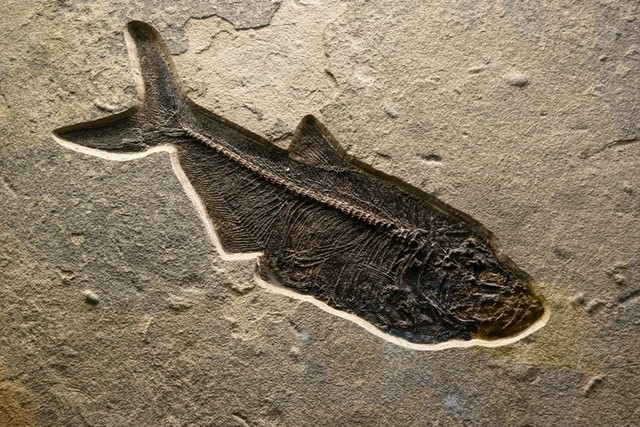A fossil is a deceased organism's preserved remnants or traces. The formation of a fossil is known as fossilization.
It is extremely uncommon for living organisms to become fossilized. Most animals' bodies waste away when they die, leaving nothing behind. A fossil can, however, develop under certain particular circumstances.
Scientists' understanding of how beautiful fossils with fragile soft tissues evolve has been changed by new research from the University of Leicester.
Fossils from soft tissues
 (Photo : Jacqueline Martinez/Unsplash)
(Photo : Jacqueline Martinez/Unsplash)

While most fossils are 'hard' tissues like bone, shells, or teeth, some rare places across the planet have special circumstances that allowed minerals to fossilize delicate components like skin, muscles, and other organs - even some ancient species' sensitive eyes, as per ScienceDaily.
One feature of this unusual preservation that has perplexed scientists is why some internal organs appear to fossilize more frequently than others.
Researchers at the University of Leicester's Centre for Palaeobiology devised an experiment to analyze the chemistry inside a rotting fish and record the pH levels of its internal organs over the period of two and a half months.
Their findings, which were published last Monday in Palaeontology, reveal that the particular tissue chemistry of each organ affects its chance of being replaced by minerals.
This finding explains why some tissues are more easily converted into the calcium phosphate fossils that record high-resolution information of a creature's most delicate components, while others appear to be lost to time.
During his tenure as a Ph.D. researcher at Leicester, Dr. Thomas Clements, now of the University of Birmingham, led the investigation. He stated:
One of the most effective methods for soft tissue to transform into rock is when it is replaced with a mineral known as calcium phosphate (sometimes called apatite).
Scientists have been researching calcium phosphate for decades in an attempt to understand how this process occurs - but one topic that remains unanswered is why some internal organs appear to be more likely to be maintained than others.
The organs do not create their own microenvironments; instead, they all decay in a type of'soup' together. This suggests that the organs' particular tissue chemistry determines their chance of becoming fossils.
A tissue's pH must dip below roughly pH 6.4 in order for it to phosphatize. If the fossil is buried fast at this pH, calcium phosphate and other minerals can begin the fossilization process, preserving the delicate detail of some soft tissues.
A Cretaceous-era octopus of the extinct genus Keuppia discovered in Lebanon, estimated to be at least 94 million years old, is one of the best specimens of such fossils.
Read more: Decline in Earth's Oxygen Caused by Fossil Fuels, Experts Suggest
Fossilization
When an animal dies, the soft components of its body disintegrate, leaving behind the hard parts, such as the skeleton. This is covered by microscopic rock particles known as sediment.
As successive layers of silt accumulate on top, the sediment around the skeleton begins to consolidate and harden, eventually turning to rock.
Water pouring through the sandstone then begins to disintegrate the bones. Water minerals replace the bone, creating a rock imitation of the original bone known as a fossil.
The hard portions of an organism, notably the bones, are left behind when the soft tissues degrade in silt.
Water penetrates into the bones, and minerals dissolved in the water seep into the crevices inside the remains, crystallizing.
These crystalline minerals cause the remains to solidify together with the sedimentary rock that surrounds them.
After the water entirely destroys the original hard portions of the organism, minerals in groundwater replace the minerals that make up the body remnants in another fossilization process known as a replacement, as per Live Science.
Related article: 5 Most Important Fossil Discoveries in the World
© 2024 NatureWorldNews.com All rights reserved. Do not reproduce without permission.



![Plastic Pollution: Scientists Include Spores of Plastic-Eating Bacteria ‘Bacillus Subtilis’ to Develop 'Self-Digesting Plastic' [Study]](https://1471793142.rsc.cdn77.org/data/thumbs/full/70396/280/157/50/40/plastic-pollution-scientists-include-spores-of-plastic-eating-bacteria-bacillus-subtilis-to-develop-self-digesting-plastic-study.jpg)
![Venomous Centipede Could be Game-Changer and Save Lives of People with Kidney Disease [Study]](https://1471793142.rsc.cdn77.org/data/thumbs/full/70407/280/157/50/40/venomous-centipede-could-be-game-changer-and-save-lives-of-people-with-kidney-disease-study.jpg)
